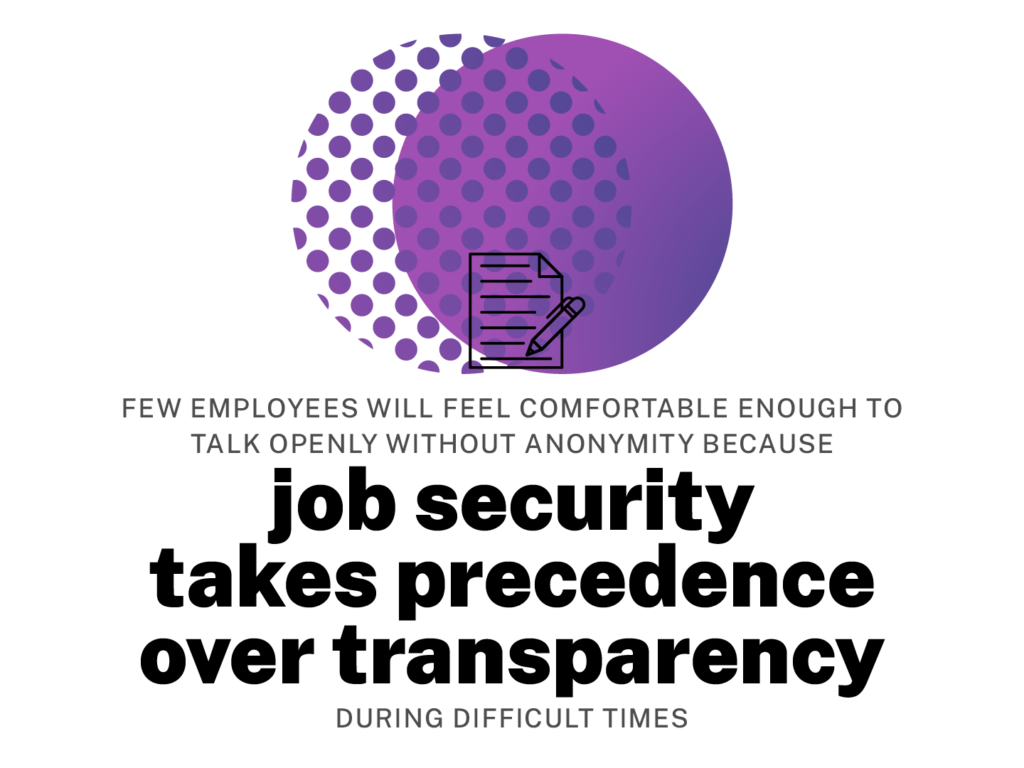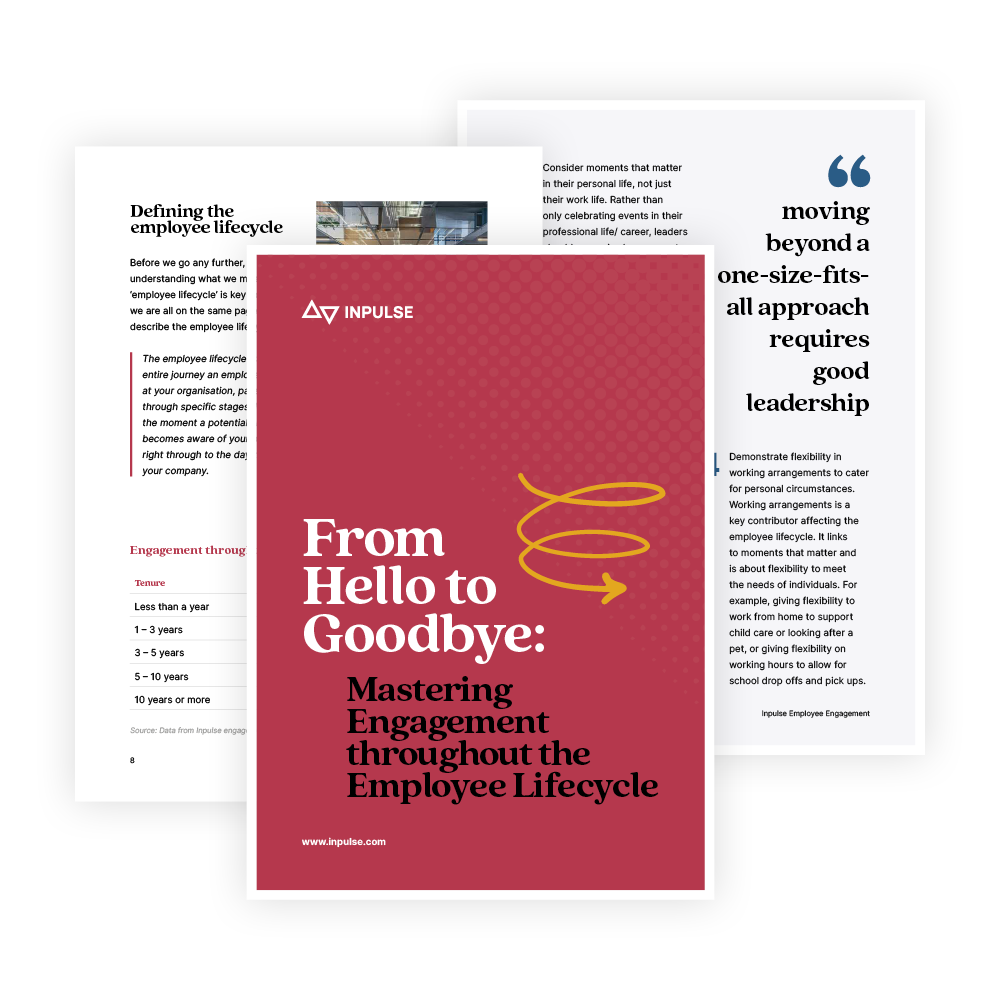Retaining Top Talent: How Employee Retention is the Next Big Business Challenge
Since the first major blow of the 2008 Great Recession, we can all agree business has not been smooth-sailing. And of course, we‘re now in the middle of a global pandemic, so we‘re still very much in the thick of it!
Covid-19 brought hugely unexpected changes and challenges to businesses; shutting down entire industries, forcing closures, ceasing trade, and separating teams.
While it‘s an event we‘ve never quite experienced before, researchers predict that businesses will face similar challenges to those that arose during and after historical global crises, like the 2008 recession, for example. Although the explicit circumstances of Covid-19 cannot be compared to preceding crises, the financial and operational strain is highly comparable.
Sharing the learnings of the Great Recession to better prepare businesses for the future, Brain Kropp, Head of HR Research at Gartner, warns of the struggle of employee retention amongst top talent.
Why is employee retention of top talent a challenge during/post crises?
Kropp says high-performers may look to exit if opportunities are fewer and cutbacks are made. He adds that ‘high-performers are typically the ones asked to take on more work and responsibilities during such times without any corresponding increase in pay‘.
High performers know their worth and are inherently drawn to growth and opportunity
Having helped companies drive employee engagement through pulse surveys for more than 20 years, Inpulse has seen first-hand how staff retention rates can decline amongst top talent during times of change.
“High-performers have high self-efficacy; they believe in their own ability. This confidence, coupled with their desire to grow and develop, will cause them to leave a struggling organisation for one that can provide them with better opportunities to develop,” says Inpulse Founder Matt Stephens.
Employers are more focused on redundancies

Interestingly when redundancies are taking place, employers will often give more time and energy to this process than areas that are equally (and sometimes even more) important, like employee retention. It‘s understandable – employers may feel a greater need to support and show up for those adversely affected. But while it‘s important to be present and supportive during restructuring (for the protection of culture and other HR-related areas), actioning employee retention strategies should still be a top priority. According to Forbes, 66% of employees who feel neglected and unappreciated will leave, especially when they‘re likely being pursued by competitors.
Companies scout for talent during times of change and uncertainty
It‘s not impossible nor difficult for top talent to find greener pastures, even when mass-layoffs are occurring. There are companies that use turbulent times as opportunities to poach talent. Employers facing contracting budgets, for example, will often pay more to attract proven performers to protect and get the most out of their investment. Similarly, organisations rocked by a downturn will be on the lookout for good people who can help them to recover quickly.
It‘s tempting to assume well-performing employees would choose job security over risking a move for better growth opportunities. But we must not forget a high performer‘s inherent desire to achieve, and in many cases, their desire to feel valued and acknowledged. They know they‘re in demand; therefore, a crisis coupled with poor business performance, a lack of acknowledgement and opportunity, and financial and operational strain is the perfect ‘climate‘ for top talent to uproot. Effective employee retention strategies (and employee recognition) should always be high on the agenda, but particularly in times of change and uncertainty.
What is meant by employee retention strategies?
Employee retention strategies refer to the strategic plans created and actioned by management for the purpose of retaining talent and reducing/avoiding high staff turnover. To drive decision-making, management would typically look at their employees’ needs and desires whilst seeking to enhance proven key differentiators such as employee motivation, culture, organisational vision, and more.

The best employee retention strategies are built around the needs of the workforce, which is why employees need to be involved in the development of these strategies. Not necessarily deliberately involved, but they should be liaised with if you‘re serious about creating employee retention strategies that work. It‘s difficult for you as an HR leader or manager to know what the weaknesses and problematic areas are for your people without asking them. Communication is key at all stages of the employee ‘lifecycle‘, from on boarding to exit.
We’ve listed 15 of the most effective employee retention strategies we’re certain will help you retain top talent not and in the future.
15 Effective Employee Retention Strategies

1. Define what talent means for your organisation
Every organisation has their own definition of talent, or, if you will, a talent ‘persona‘, which is usually based on their values, mission, vision, and objectives. This persona is important to define, both for employee recruitment and retention strategies.
What do you look for? Is it a great character, punctuality, trustworthiness? Is it great chemistry; they‘re easy to work with and get along with everyone? Is it competence; they know how to do their job well and can learn and grow? Or is it that they share the same culture as your organisation, so their values and behaviours are aligned? Or is it all 4 C‘s?
It‘s easy to understand how this facilitates recruitment, but not nearly as clear for your employee retention strategies. When you define what talent looks like at your company, you‘re demonstrating the importance of your values and vision – you‘re not hiring to fill a gap but to fulfil a vision and uphold your values. Employees love to see this. You‘re also recruiting with your organisation and people in mind.This demonstrates your desire to keep them satisfied and involved, not to mention your commitment to maintaining/improving culture, team morale, employee motivation (and others) for the benefit of your current and future workforce.
2. Establish an exciting organisational vision
Does your organisational purpose and vision for the future excite your people enough to want to stay? Your organisation may have established one main vision in the very beginning – taking it right back to the start-up phase. However, creating exciting ‘mini-visions’ in order to reach milestones or targets for each month, quarter, year, or five years, for example, is what drives motivation that much more. During times of remote-working, this is crucial as employees often feel far-removed from the vision, or at worst, believe there isn‘t one.
It’s best for senior management to develop the main strategic visions for the organisation. Team leaders are responsible for creating mini visions and develop them with the organisation’s goals in mind. Mini visions are essentially the ‘desired outcomes’ of the team. Fulfilling these visions facilitates the achievement of the main organisational vision, so they’re really important for the success of the company, not just to drive motivation and assist with staff retention. We’d recommend team leaders involve their team members in the development of the mini-vision – this is where communication is key. (Virtual) team meetings are a great way to discuss ideas and enhance team morale and motivation.
Creating visions may seem obvious, but so many team leaders leave this to senior management and so forget to create visions for their team. Truthfully, employees love to know what they’re working towards and how it might be achieved, so communicating this at every opportunity will not do any harm. Team leaders must not forget to sell these visions and get their people excited, onboard, and committed. This is how opportunities for growth are created, motivation is enhanced, and employee retention is achieved.
3. Be transparent about problems and solutions
Employees truly value transparency and accountability. According to a 2014 American Psychological Association survey, 25% of employees don’t trust their employer, and only about half believe their employer is open and upfront with them. Employees know there are problems – or at least that there’s room for improvement. If management cannot acknowledge and take accountability for problematic areas, they simply cannot find solutions and make improvements, and as we know, talent yearns for continuous growth and improvement.
So be clear and open about challenges in the organisation and clear about your plans to address them. This way, your people can feel confident about the organisation’s commitment to doing and being better. This way, employees will be less likely to seek out opportunities with competitors who are better aligned to their needs and values.
4. Give your employees a voice by conducting pulse surveys
Do you value what your employees have to say, and have you established trusted channels for them to confidently express themselves? Your people are the organisation, and so should, wherever possible, be involved in shaping the organisation’s response to challenges involved in people-related decision-making, and in the formation of team visions and goals. This will not only give them greater commitment and ownership but will also improve communication and job satisfaction, and therefore ignite a desire to stay.
Feedback sessions and team meetings are great for fostering communication. However, individuals often don’t feel comfortable to openly share their honest opinions, concerns, and needs in these environments, especially not when times are tough – personally and business-wise. What often happens is the meeting is led by those confident enough to speak – and is not necessarily led by what they and others actually feel. To be open about real feelings, concerns, and needs, employees need confidentiality and, in most cases, anonymity. This is where pulse surveys work really well, as it provides management with the true, no-holds-barred employee voice. 
Pulse surveys provide you with invaluable data about your people. You can create very specific surveys (on whatever you need clarity on), and these results provide you with incredible insight into how your people feel and what they need. This data helps to make people-related decisions that are ultra-rewarding. Because it’s driven by your people!
Feedback surveys post-crisis are always beneficial to find out what your people feel and need as you approach the recovery phase. Without a confidential channel of communication, it’s difficult for managers to know what their people need post-crisis, and it’s risky to assume. Few employees will feel comfortable enough to talk openly without anonymity because job-security takes precedence over transparency during times like these. This is where pulse surveys deliver for both employees and management; it provides the anonymity employees require to express themselves, and provides managers with the data they need to make rewarding decisions.
5. Define your leadership style to build trust and connection
In a survey by International Review of Management and Marketing, “60% of the leaders surveyed said their retention strategy was not good enough to retain employees.”
Perhaps these leaders’ retention strategies needed refinement, but perhaps their leadership style was/is not conducive to talent retention, either.
Defining your leadership style will help with employee retention because it builds trust and connection. Two key ingredients for retaining talent!
To build trust and connection with your people, be transparent, vulnerable, and communicative. A leadership style that demonstrates care for their people, their wellbeing, growth, and happiness will help foster strong relationships. Not only will the leader be more attuned to the needs of their people (and be able to fulfil them), but it will minimise the likelihood of people-related issues arising, such as high staff turnover.
For employees to trust their leaders, they want to know what they stand for and how they go about leading, solving problems, and fostering growth – so always be transparent and communicative about your values and the plans you have. They want a leader they know they can count on, look up to, and even learn from. This is especially true for top talent, and they’re even more sensitive to this during turbulent times.
6. Share company success stories
Top performers are often head-hunted during times of crisis. LinkedIn has made it incredibly easy for competitors to spot talent and get in touch with them.
So with your talent being head-hunted and being presented with highly attractive offers and benefits regularly, it’s so important to reinforce why their decision to stay is the best decision there is!
Sharing company success stories demonstrates how much you’ve grown and are still growing. 
Even if you’re moving through change and things aren’t looking particularly good, celebrate the small wins or, at the very least, map out your recovery plans and share them with the team. Company success stories can be anything from signing a new client or meeting targets to getting a PR piece published on a popular blog. It can be anything that demonstrates growth and shows your people that you’re moving forward.
Even if the wins are small, slow progress is still progress! You should also talk about the future and the great things you’re planning to achieve. It’s really important to get your people excited about the future because it helps engagement. There are many other employee engagement ideas you should consider, of course. High performers also love opportunities, and if there are opportunities for them to grow alongside the organisation, they want to hear about it. It may very well save you from losing them!
7. Recognise exemplary performance at a team and organisational level
During times of crisis, employee recognition often takes a back seat. Managers have ‘more important’ things to get to, but little do they know, it’s very often the reason they lose their top-talent during such times. Although redundancies may be taking place, there’s still the same amount of work to be done – sometimes more – and, of course, less staff to lean on. It’s typically the top performers that are asked to close this skills gap, and as Kropp mentioned, often without an increase in pay. This, plus little to no recognition, while likely being approached by competitors who value their skills and are advertising an exciting career opportunity, makes it a no-brainer for them to uproot.
What managers need to do is remove these threats from the table – at least those within their control. Therefore, you need to be recognising performance and have a willingness to support at a team and organisational level, fairly compensating where possible, and nurturing relationships with employees (specifically top talent) to ensure their needs are met, and their values lie with the organisation and not competitors.
8. Encourage HR and line managers to form ‘mentor-like’ relationships with high performers
In a recent article by Harvard Business Review, it was advised that high performers be managed uniquely, not solely by line managers. The problem with line managers doing the managing of high-performers is that they may not be thinking about the long-term corporate asset of these individuals. Instead of identifying and nurturing their growth potential and assisting them in career development, they’re concerned with what the team requires today.
These high performers end up feeling like there are narrow development opportunities, limited by the line manager’s scope of requirements. There is also the case for talented employees being ‘hoarded’ by line managers, either to protect the performance of the team or, in some cases, due to threat.
Establish a communication channel between HR, talent, and line managers to avoid this issue. Regular one-to-one feedback sessions between an HR leader and employee is always a good idea. Not only can the employee discuss their career plans with the person best equipped to help them, but they can openly discuss concerns they have within their team or with their team leader.
The HR leader can then filter the necessary information down to the team leader to ensure the employee is getting the right mentorship and having their needs met. Pulse surveys focused on career development and/or relationships with line managers acquires powerful data about what your people feel and need. Regularly pulsing means you’ll be able to track the emotional journey of employees, and therefore able to decipher whether their needs are indeed being met or not.
This way, HR has the responsibility and privilege of identifying and nurturing tomorrow’s leaders, with a clear idea of the high performer’s needs and career trajectory, and can work together with the line manager to ensure they’re not only kept satisfied but are being pushed to their full potential.
9. Invest in learning and development
One way of guaranteeing growth and development is through learning and development, i.e online courses. Sending employees (whether they are high performer’s or not) for training strengthens the organisation’s strategic position and competitive advantage. It also demonstrates your commitment to nurturing your people’s potential. This is what top talent is looking for; they’ll stay with an organisation that invests in them.
In a study conducted by Glassdoor, it was found that 60% of candidates consider perks and benefits before evaluating a job offer, while recruitment agency, Robert Half, found that candidates evaluate job offers holistically, specifically looking for companies that will invest in their career development. Young professionals (millennials) have also been found to ‘job hop’ due to feeling a lack of opportunity for learning and growth; it’s one of the top three factors retaining millennials.
Learning and development is a powerful employee retention strategy. Remember to align programs/courses with the aspirations of your top employees. Communication with top talent is essential to ensure you’re delivering what they need. Learning and development opportunities are the superpowers of retaining people!
10. Ensure senior leaders are accessible and visible to their people
Employees want to see that senior management genuinely care about their people. Senior managers should be accessible and approachable. They must demonstrate a keen interest in learning how to deliver a better employee experience.
Communication is essential. It’s important to bridge the divide between top management and people. Here again, regular one-to-one meetings are great; otherwise, conducting regular pulse surveys is most impactful. Give your people a platform to express themselves and provide managers with data they can use to make decisions. This is the best way to go about listening, learning, and making positive business change.
11. Run regular pulse surveys to understand how your people feel and what they need
Communication is so important if you’re serious about employee retention. If you don’t know what your people feel or what they want, you simply cannot give it to them. It’s incredibly risky to assume what your people feel and what they need. Because high performers demonstrate the characteristics of a highly engaged employee, employers often wrongly assume that they’re engaged, committed, and loyal. Sadly employee engagement is known to take a downward turn after a crisis, especially amongst top talent. According to a study by Harvard Business Review, 21% of employees were “highly disengaged” at the end of 2009 — up from 8% in the first half of 2007.
Unfortunately, the personality of a high performer can be misleading for managers when it comes to determining their level of engagement. It’s only when they’re given a platform to honestly express how they feel, does the truth of the matter come out, i.e. that they’re, unhappy and/or disengaged (and therefore open to better opportunities elsewhere).
Pulse surveys are great as it provides employees with the platform to express their feelings, concerns, and needs. In fact, they are great for whatever management is looking to gain clarity on. Employees can speak up, ask for help or flag concerns in an anonymous, trusted way. People analytics is, of course, incredibly helpful for managers who want to retain top talent. They can use the data to identify key negative issues influencing people’s behaviour. Of course, this information will help to nip it in the bud before it becomes problematic.
12. Make employee wellbeing a priority by measuring it regularly
Not only do regular pulse surveys help to determine levels of engagement, but wellbeing surveys help to keep a pulse on employee wellbeing. This is especially important to measure during times of change. It’s difficult to know how employees are feeling and coping without asking them. Knowing the truth, you’ll be able to support them in ways that can facilitate engagement, productivity, performance, and many other areas that promote success.
Problems will arise if employees feel they aren’t being supported and have no way of expressing this confidentially. It will either show up in their behaviour and the way they work or they’ll feel compelled to leave. Surprisingly, it’s not difficult to meet your people’s needs and keep them happy and engaged. You just have to create a space and platform for them to communicate their needs with you.
13. Ensure there are channels which enable people to raise issues in confidence
There should always be more than one channel of communication that employees can rely on. E.g If an employee has a issue with their line manager they may not feel comfortable to confront them. If there is no one else to turn to, they may feel leaving is their only option.
HR should always be available to employees, but there should also be alternative channels of communication like surveys, for example, that provide employees with the confidentiality and anonymity they may need.
There, of course, cannot be too many communication channels, but there should be a few trusted ones that meet the varying needs of the employees. Employees typically want to discuss career-related things with an HR leader. Other times, when their concerns are sensitive, they may need a confidential channel of communication that’s not person-to-person. The only way to properly resolve and avoid staff-related issues, and therefore, see the success of your employee retention strategy is to talk to your people and have them talk to you!
14. Treat those having to leave with compassion and humanity
Employees are always watching; they’re extremely sensitive to the actions and decisions made by management. Whether they’re directly affected by them or not, they are observing how you treat their colleagues. They’re also noticing how you handle change, problems, and unfortunate circumstances like redundancies.
Always live up to your values and treat those having to leave with the utmost compassion, fairness, and humanity. You may just lose more great people if you fail in this area. Remember, showing respect in the workplace is big for culture, so show your support, be transparent about the decisions you’ve made, always speak positively about your current and ex-staff and show support to those who are still employed by the organisation and who may be emotionally affected by the changes.
15. Reinforce company values and their role in decision-making
Organisational values are the soul of a company – at least they should be. It’s your values that guide decision making, and it’s typically the values that employees buy into and resonate with. Yes, employees are interested in benefits, but it’s the values that actually keep them loyal or not.
If you’ve lost sight of your values and what you stand for, it’s difficult to retain and attract talent, so it is best you re-establish and reinforce them. Values reflect your aspirations as a business, so they’ll be different from business to business.
Top talent particularly resonates with values that demonstrate the company’s commitment to growth and development. As mentioned, this includes learning/training and development. Others include diversity, honesty, integrity, and balance. Talent cannot gauge if the organisation is a good fit for them and their aspirations if there are no clear values. Reinforce your values and the direction you’re moving in as a company so that employees can be made aware of their purpose and the role they play in upholding them.

